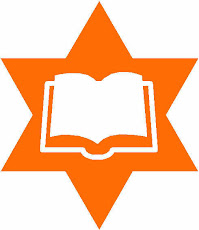One of the most difficult tasks in figuring out a curriculum is trying to articulate specifically what it is we want students to know at the end of their time with us.
Having a well-written Mission Statement can help begin to define our goals. Developing a Scope and Sequence – listing what material will be covered in which order at what grade – can help. Does it go without saying there should be a match between the Scope and Sequence and the Mission Statement? Probably nothing should “go without saying….”
The next big step is to define at each level, exactly what we want students to learn from the vast pool of knowledge available to them.
As a teacher I learned early on to review my students’ progress on a monthly basis, first listing what my instructional objectives had been and then ascertaining what my students could actually accomplish at the end of the month. I learned about Bloom’s taxonomy and the hierarchy in asking different types of questions. And I learned to use definitive verbs (identify, describe, differentiate) instead of the amorphous “understand” or “know” when writing both objectives and outcomes.
But specifically what to teach – what to choose to emphasize – was hard for me.
If I was told to “teach about Chanukah,” for example – I wasn’t quite sure what to teach: historical context, rituals and customs, music, food, Hebrew, values, when it occurs on the calendar; about assimilation (and if so, how); or about “miracles” or symbolism? Too many questions – and I was never quite sure what my students already would know before they came in to my (third grade) class.
As a director, I spent a great deal of time previewing text books, teacher guides and resource materials. I wanted to ensure that the approach the authors used was one that would mesh with the congregation's ideological perspective.
But I never really focused on providing teachers with the specifics of what I expected them to emphasize in their classwork.
It wasn’t until last year, when I began teaching in our Midrashah L’Morim program (for 11th and 12th graders who think they want to become religious school teachers) that I really faced that deficit for the first time. As I passed out a list of materials for students to use in plotting an annual calendar for their mythical classes, one of the students looked at me and said, point-blank, “You’ve given us text books, not a specific curriculum. What do you want us to teach about from these books?” (Nothing like getting nailed by your students, especially when they’re right).
In order to provide an authentic an experience as possible for my Midrashah students this year, after I finished my “Scope and Sequence” for the lab segment of our program, I began to work on “what should students know at the end of the unit” for the grades we’ll be focusing on.
It was harder than I anticipated. The process of identifying these specifics was complicated by the wealth of information, the developmental levels of the students, AND the LIMITED AMOUNT OF TIME AVAILABLE TO US.
But here’s what I ended up with for my hypothetical Kindergarten/First Grade class:
Materials selected: Let’s Discover the Bible; Let’s Discover God; Oral Hebrew Language – Family, School, Body words; an Introduction to Israel
At the end of the unit, the student will be able to:
Text study:
1. summarize the story in 3-5 sentences
2. identify what s/he sees as the main lesson of the story
3. give examples from his/her daily life which support/refute the main lesson
4. find the main characters on a “biblical family tree” (where applicable)
Holidays:
1. identify the season of the year in which the holiday occurs (here in US)
2. identify and describe 2-3 ritual objects associated with the holiday
3. provide a 3-5 sentence description of the holiday
4. match the Hebrew name of the holiday with an English description of it
Spirituality:
1. identify which creations remind us of God’s presence
2. recite the Sh’ma and discuss its meaning for them.
3. identify individual behaviors which indicate we are made in God’s image
4. list the things in his/her life for which s/he is thankful for and write a personal blessing for them.
5. provide examples of ways in which symbols are used as reminders of covenantal behavior.
6. describe ways in which Shabbat can be celebrated as a “separate time” from everyday life.
7. identify different purposes for prayer and different ways in which individuals and communities pray.
8. demonstrate patterns of orderliness in their lives.
Hebrew:
1. translate from English to Hebrew, and Hebrew to English, and use correctly in context
* 10 words relating to body parts
* 7 words relating to family
* 5 words relating to school
2. identify holidays by their Hebrew names.
3. count to ten in Hebrew.
Israel:
1. locate the cities/regions studied on a map of Israel.
2. identify one key fact about each of the areas studied.
Evidences of learning – photographs, charts with student lists on, family trees, anecdotal reports, samples of student work
I would give this to my teacher at the beginning of the year. At the end of the year, we would jointly review and assess these expectations and, if necessary, revise them for the following year.
[Note: Understanding by Design (Grant Wiggins and Jay McTighe) has been helpful for many professionals who wish to engage in this process. It doesn’t work for me, but it might for you. ]
Subscribe to:
Post Comments (Atom)





No comments:
Post a Comment